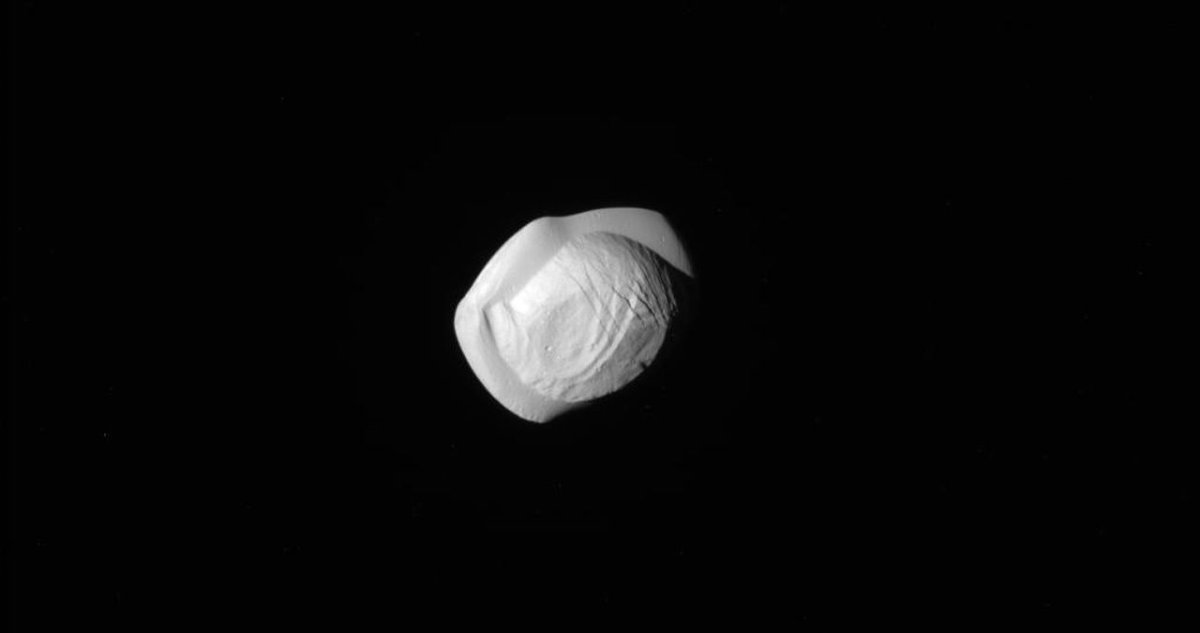Our solar system's moons are an eclectic bunch: Some have plumes of water shooting into space, some are the tiny remainders of a past collision, some have ice trapped below the surface. Then there are Pan and Atlas, tiny moons of Saturn that look like ravioli floating through space.
That distinctive shape may have been the natural result of head-on collisions between even smaller moonlets, according to a new paper published in the journal Nature Astronomy.
The paper draws on previous work by one of the co-authors about what happens when comets collide, in which a small subset produce the equatorial ridge of a ravioli. Although those collisions and aren't particularly important for comets, co-author Adrien Leleu saw the work and immediately thought of the striking images of Pan and Atlas produced by the Cassini probe. He wondered whether those small collisions might be responsible for the shape of the Saturn moons
Read more: Potentially habitable Europa has plumes that could reshape hunt for alien life
"Things looked good from the beginning actually," Leleu, an astronomer at the University of Bern in Switzerland, told Newsweek.
In order to produce ravioli shapes, a collision needs a specific speed and angle. That's a problem with wild, unpredictable comets, but Saturn's moonlets are much less finicky because each orbit in the same disk around the planet. "It's mostly fine to have head-on impacts because everybody's in the same plane," Leleu noted.
The work focuses on six tiny moons around Saturn, which display a range of shapes: Pan and Atlas look like ravioli, Prometheus looks like it's been stretched into a stick and the other three look like nondescript lumps.

That breakdown resembles what Leleu and his co-authors saw in their modeling, which predicted that between 20 and 50 percent of this set of small, odd-shaped moons around Saturn. Because there are only six moons in this particular size-based set, it makes sense that the numbers wouldn't match precisely. "It's a very small number for statistics," Leleu said.
The research isn't just a matter of understanding how these particular strange moons earned their endearing shape. All research on the formation of objects in space helps scientists understand what was happening as our solar system first formed and how it has changed since.
Uncommon Knowledge
Newsweek is committed to challenging conventional wisdom and finding connections in the search for common ground.
Newsweek is committed to challenging conventional wisdom and finding connections in the search for common ground.
About the writer
Meghan Bartels is a science journalist based in New York City who covers the science happening on the surface of ... Read more
To read how Newsweek uses AI as a newsroom tool, Click here.








